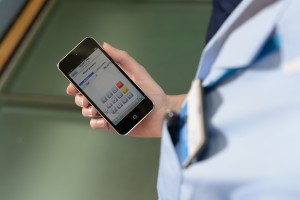 A clinical system that is used in a handheld device such as an iPad or smartphones ‘watches’ patients’ vital signs, saving almost 800 lives in its first year. The Learning Clinic developed the VitalPAC system with help from medics at Portsmouth Hospitals Trust and clinical outcome modelling experts from the hospital and the University of Portsmouth.
A clinical system that is used in a handheld device such as an iPad or smartphones ‘watches’ patients’ vital signs, saving almost 800 lives in its first year. The Learning Clinic developed the VitalPAC system with help from medics at Portsmouth Hospitals Trust and clinical outcome modelling experts from the hospital and the University of Portsmouth.
More than 30,000 doctors and nurses across 51 hospitals now use the system which recently won the ‘Improving Care with Technology’ award from the Health Service Journal.
VitalPAC is designed for clinicians to record vital signs and triggers an escalation if needed based on the calculated early warning score. It also advises when the next observation is required. Using this system Portsmouth hospital reduced the outbreak of norovirus by 95%.
It was developed to improve the reliability, accuracy, safety and clinical impact of patients’ vital signs and early warning score records.
Portsmouth Hospital Trust first used the system in 2006 and research has shown that with its use, deaths in hospital fell from 7.8% to 6.4%. Similar results were experienced in another hospital in the Midlands.
As well as monitoring vital signs, the device can be used for monitoring venous thromboembolism (where a blood clot forms in a vein) prophylaxis, indwelling devices (such as catheters), dementia, alcohol consumption, nutrition and MRSA. The Learning Clinic has recently developed an associate system called VitalFLO to assist clinicians and hospital managers with the patient flow system across the hospitals.



